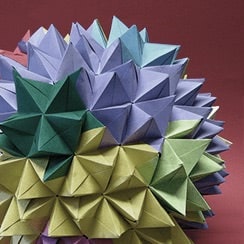Academic Learning Solutions Magazine - List to String Conversion Program in Python: The Art of Python

Holiday Sale
1767430799
Go Unlimited with Magzter GOLD
Read Academic Learning Solutions along with 10,000+ other magazines & newspapers with just one subscription
View CatalogSubscribe only to Academic Learning Solutions
Cancel Anytime.
(No Commitments) ⓘIf you are not happy with the subscription, you can email us at help@magzter.com within 7 days of subscription start date for a full refund. No questions asked - Promise! (Note: Not applicable for single issue purchases)
Digital Subscription
Instant Access ⓘSubscribe now to instantly start reading on the Magzter website, iOS, Android, and Amazon apps.
Verified Secure
payment ⓘMagzter is a verified Stripe merchant.
In this issue
One of the foremost broadly utilized programming languages these days is Python, and in this lesson, we'll think about a few strategies for changing over a list to a string. In expansion, we are going go over a few of the nuances of Python, such as the definitions of strings and lists. Now let's get going.
A list: what is it?
In computer programming, a list is a type of data structure that may be used to hold a collection of objects and is arranged in a certain way. It is a useful tool for managing massive data collections in any way. Numerous objects, such as texts, numbers, and even other lists, can be stored in lists.
What in Python is a List?
Python lists are ordered sequences that can contain a range of object kinds, including float, character, and integer. In other programming languages, an array is the same as a list in Python. Square brackets are used to express it, and commas (,) are used to divide two list items apart.
Academic Learning Solutions Magazine Description:
Empower your academic journey with our comprehensive Academic Learning Solutions. Tailored to meet diverse educational needs, our innovative tools and resources ensure a dynamic and effective learning experience. Elevate your academic success with personalized solutions designed for students, educators, and institutions alike. Explore a world of possibilities and unlock your full learning potential with our Academic Learning Solutions.
Recent issues

Data Visualization: What Is It?

How Does Accounting Use Data Analytics?

Will AI Take My Job Away? How Professionals in the MENA Region Can Get Ready

Advantages of Total Quality Management (TQM)

Best Professional Course Following Graduation

AI's Future: Trends, Effects, and Forecasts

The Function of Quality Assurance and Quality Control

Is AI Difficult to Learn - A Complete Guide

A Comprehensive Guide to Quality Management System (QMS) Types

Selecting Excellence in Total Quality Management vs. Six Sigma

The Top 20 Ways to Motivate Employees

Is Learning Python Easy? Discover the Truth Right Now!

Software Quality Assurance (SQA)

A Quality Manual (QMS)

The 7-S Framework

Ten Future Jobs That Could Change Your Destiny
Related Titles

International Journal of Education and Management Studies

SOPHOS

English Vocabulary Made Easy

English Language for Competitive Exams

General Science

Curries from the South

English Reading Comprehension

Science

Herbal Cure

English Grammar & Composition

A To Z of Internet

Banking Awareness

101 Inspiring lives

Data Science Future

Naturopathy

Quiz Time Science & Technology

English Grammar Workbook

English Workbook Class 1

Objective Computer Awareness

Dictionary of Legal Terms

Electronics Projects for Beginners

Face Reading

Computer Workbook Class 3

Progression Economics

Verbal Reasoning - English

Mathematics

English Workbook Class 5

English Workbook Class 2

Mathematics Workbook Class 1

Electrical & Electronics Projects























